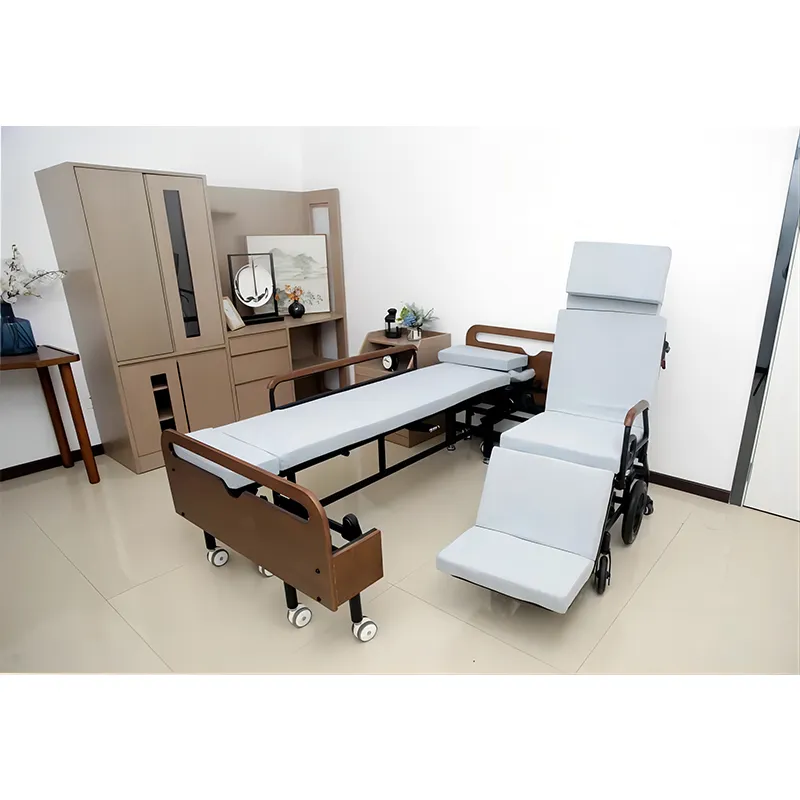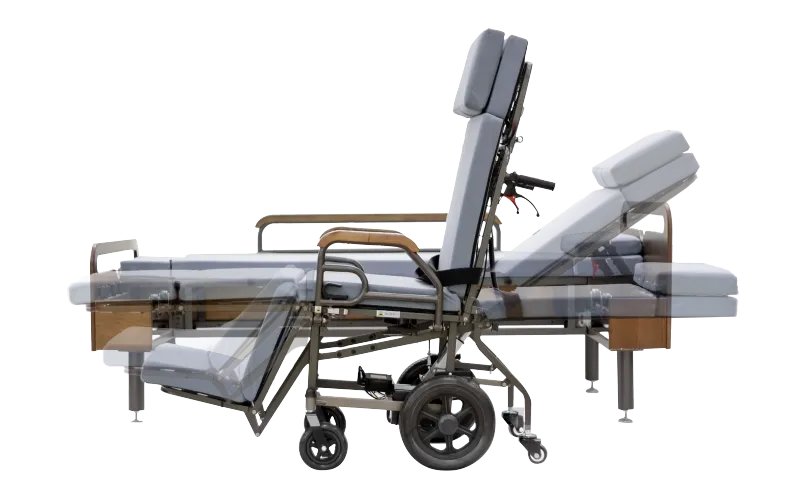
What kind of mattress is used for hospital bed?
2024-06-06 15:30
The mattress of a hospital bed is crucial to patient comfort and health, so what kind of mattresses do most hospitals use? This article will explore this issue and explain the materials and characteristics of hospital patient bed mattresses, as well as their role in medical care.
What kind of mattress is used for hospital bed?
The mattresses used in most hospital beds are usually made of materials such as high-density foam, gel, gas inflation or air bags. They have good elasticity and adaptability, and can evenly distribute body pressure and reduce pressure concentration on specific parts. This helps prevent the development of pressure ulcers and provides a good sleep and rest experience. In addition, medical mattresses are usually waterproof, antibacterial, and easy to clean to ensure the hygiene and safety of the mattress.

Why do hospital beds choose these types of mattresses?
The reasons why hospital patient beds choose high-density foam, gel, gas-inflated or air bag mattresses are as follows:
1. High density foam mattress:
High-density foam mattresses are one of the most common types of mattresses found on hospital beds. This mattress is made from high-density foam material for excellent support and adaptability. It can evenly disperse body pressure, reduce pressure concentration on specific parts, and effectively prevent the occurrence of pressure ulcers. High-density foam mattresses also offer good durability and comfort, providing patients with a good sleeping experience.
2. Gel mattress:
Gel mattresses are another common type of hospital mattress that are filled with a gel material. Gel mattresses have good elasticity and adaptability, and can be adjusted according to the patient's body shape and posture, providing personalized support and comfort. Gel mattresses also have excellent temperature regulation properties, which can effectively reduce the patient's surface temperature and improve sleep quality.
3. Gas air mattress:
A gas air mattress is a mattress with adjustable air pressure, usually composed of multiple air chambers. The hardness and softness of the mattress can be adjusted by controlling the air pressure in the air chambers. This type of mattress is suitable for patients who require regular adjustments to posture and pressure distribution, such as those who are bedridden for a long time or suffer from specific diseases. Air mattresses are adaptable and comfortable, providing personalized support and protection.
4. Air bag mattress:
An air bag mattress is a mattress filled with air bags, often used in special medical settings or for patients who require special care. This mattress features an adjustable air cell layout that adjusts to the patient's needs and medical staff's recommendations to provide customized support and comfort. Airbag mattresses are effective in preventing pressure ulcers and improving sleep, and are suitable for specific treatment needs and patient groups.
What are the materials and characteristics of medical mattresses?
Medical mattresses come in a variety of materials and features. Among them, high-density foam mattresses have good support and comfort, which can effectively reduce body pressure and prevent the occurrence of pressure ulcers. Gel mattresses have good temperature regulation properties and can provide patients with a more comfortable sleeping experience. Air mattresses and air bag mattresses can be adjusted according to the needs of the patient, providing personalized support and comfort. In addition, medical mattresses are usually waterproof, antibacterial, and easy to clean to ensure the hygiene and safety of the mattress.

What is the maintenance and replacement cycle for hospital bed mattresses?
The maintenance and replacement cycle of hospital patient bed mattresses is crucial to ensure the comfort and hygiene of the mattress. Generally speaking, hospitals clean and disinfect mattresses regularly to prevent the growth of bacteria and dirt. At the same time, the hospital will regularly check the wear and usage status of the mattress and replace the mattress in time as needed to ensure the comfort and health of the patient. Typically, the replacement cycle for a hospital bed mattress is about one to two years, depending on the material and usage of the mattress.
Summarize:
Hospital patient beds use mattresses made of materials such as high-density foam, gel, gas inflation or air bags, which are designed to provide a good sleep and rest experience, prevent the occurrence of pressure ulcers, and ensure the hygiene and safety of the mattress. Choosing these types of mattresses can help reduce patient discomfort and health risks.








